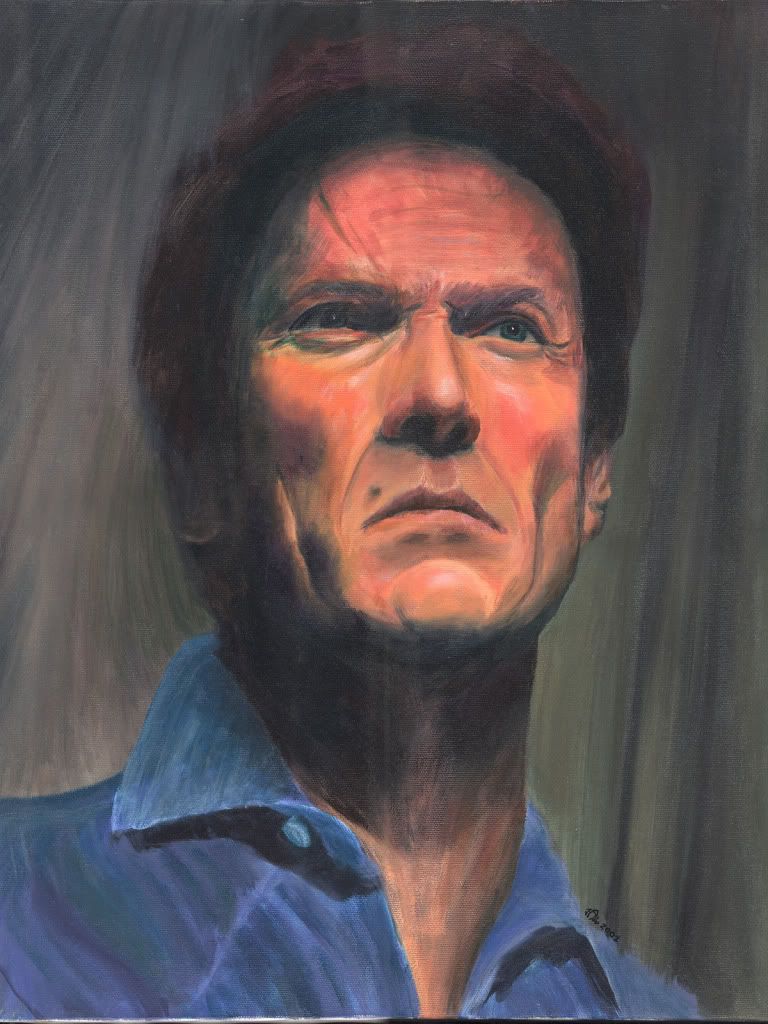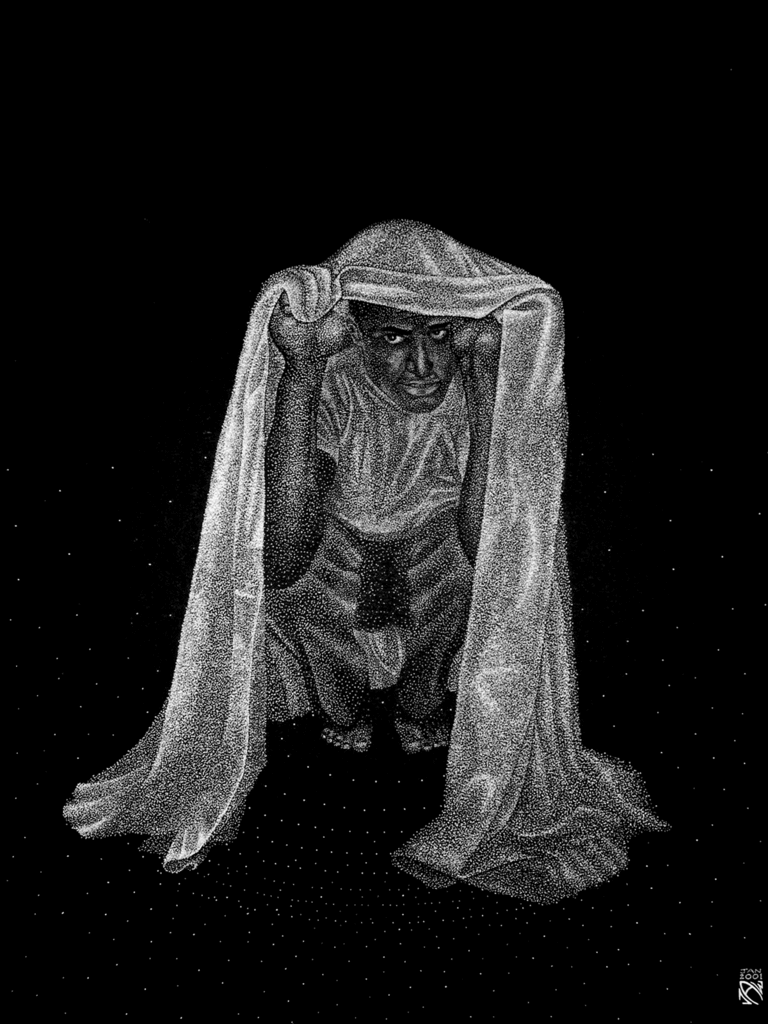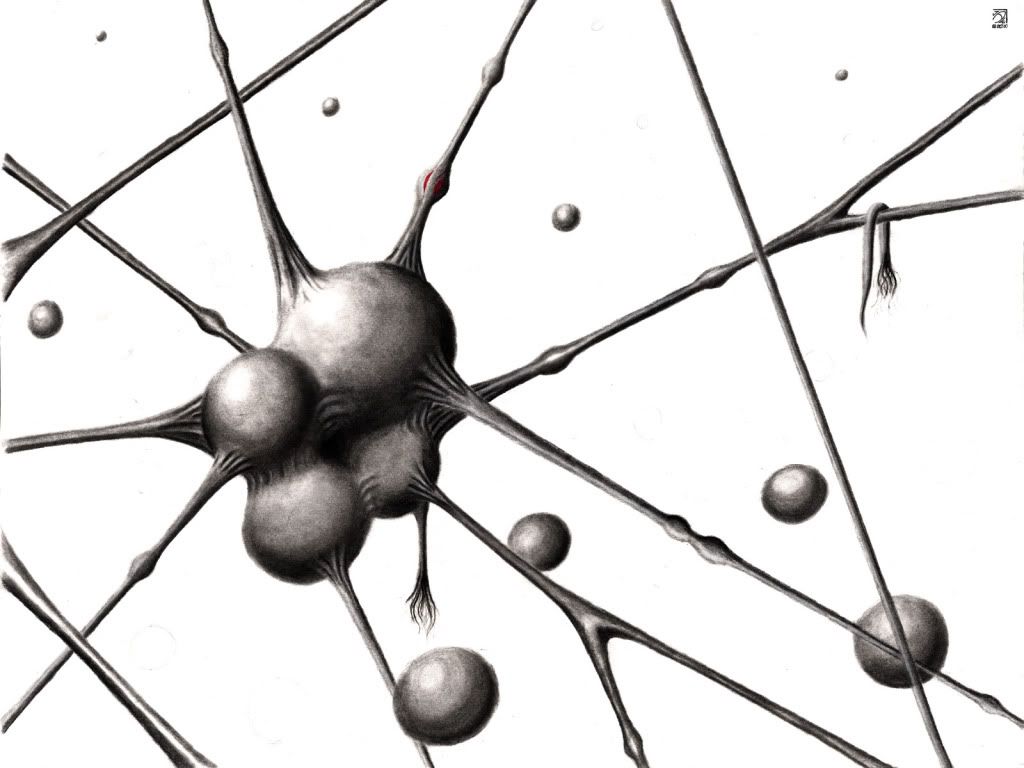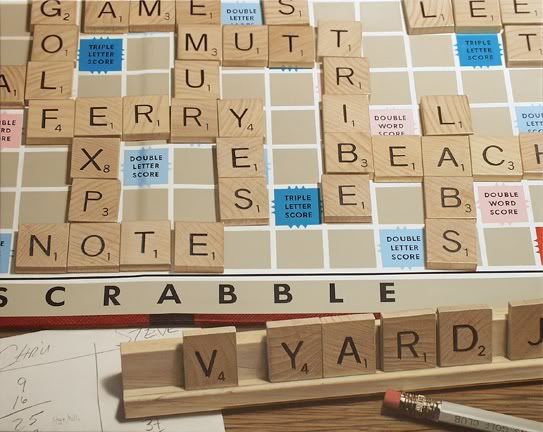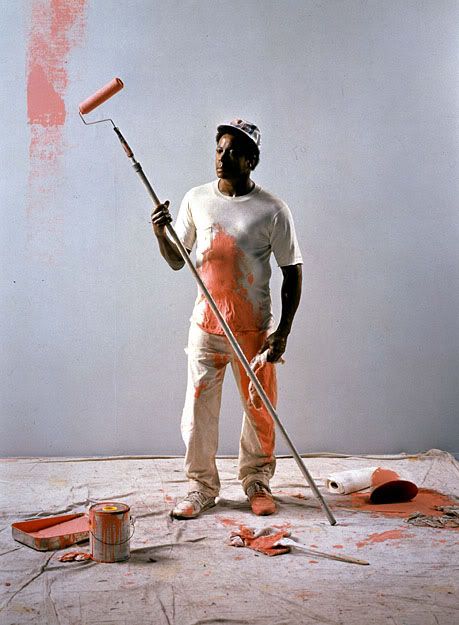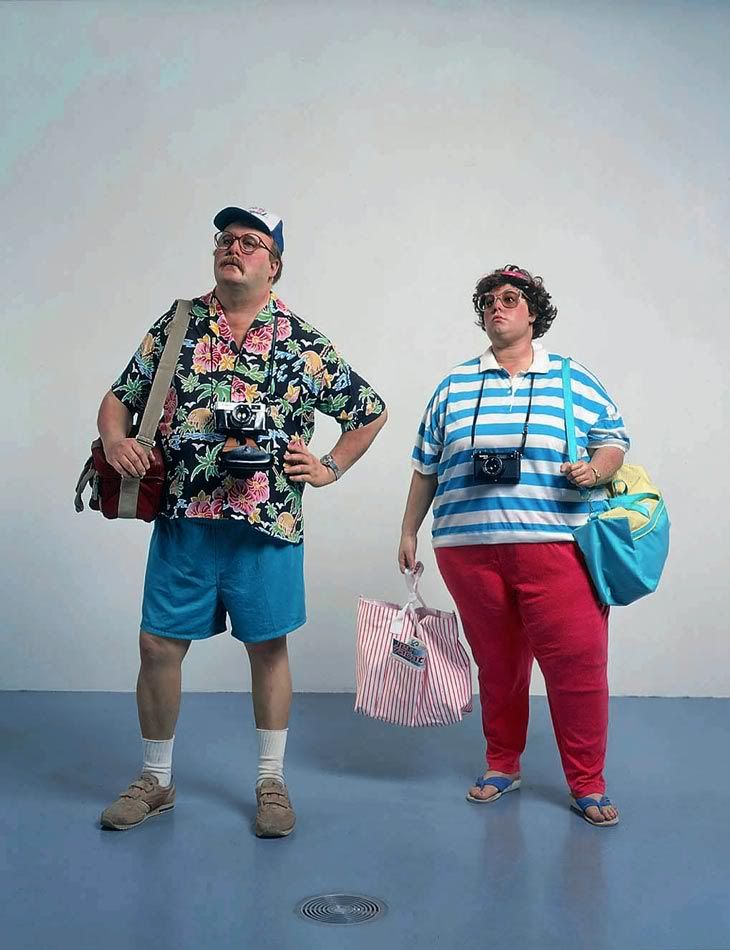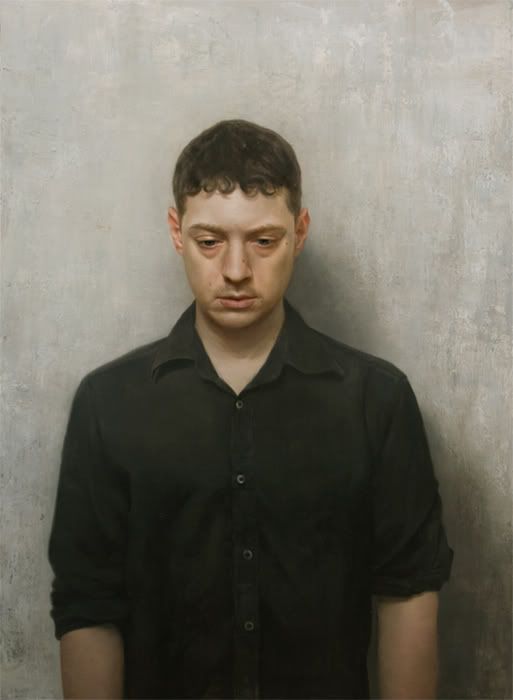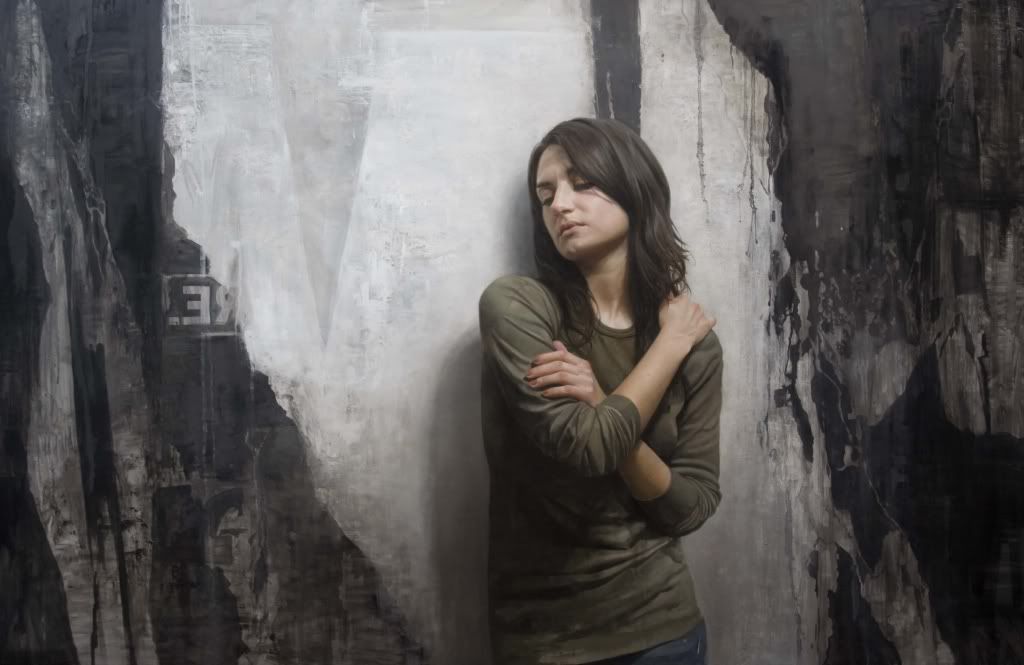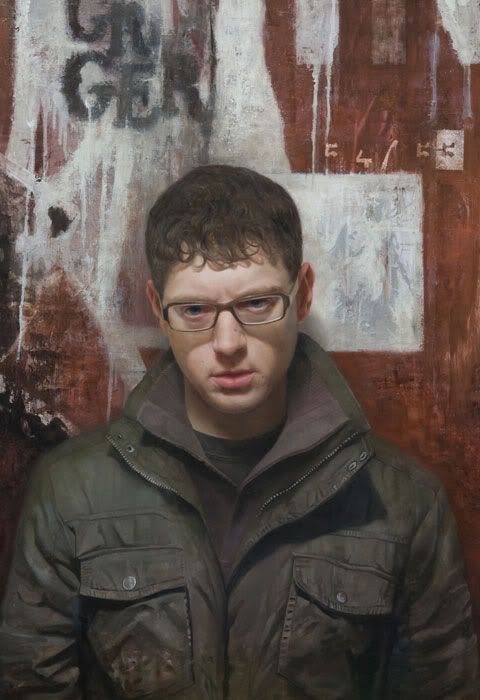In my Anatomy and Physiology class we had to create a superhero and explain the science behind their powers so here's mine. This is more of a backup for me to have in case i lose the file or something but I'll put it up here for you to read...personally I had a lot of fun with this. So enjoy.
Zelig was one of the most prominent superheroes of his time. He was what the Germans called a “Luftwaffe” or a “hero of the people.” He was born to normal parents, but during his gestation he developed a mutated gene from the extreme soil pollution in Germany. In the year 2516 the president of Croatia dropped 4 nuclear bombs in an 18 mile radius of Berlin, tainting the soil with Uridium causing a great shift in the German environment. The unusual amounts of Uridium in the soil caused the plant life to change drastically…one example was the Rigidium plant (
Rigidius floranus). The Uridium caused the molecular mass of all ferns, creating a hard metal-like substance to form on the husk of the plant when it dies. The “shell” of the rigidium plant can be melted down and foraged to create a metal 20 times harder than diamond and 10 times stronger than Adamantium. Zelig used his powers of shape-shifting, flying, telekinesis, and healing to help better the life of his people. In 2527, when Zelig was 35 he was captured by the United States government and placed in the then newly reinstated Stargate Project, a military investigation to attempt to use psychic occurrence as a military defense weapon. Here are their notes…
Name: Wilhelm Ackermann
D.O.B.: May 23, 2492
Place of Birth: Widerwogen (District of Berlin, Germany)
Suspected Abilities: Healing, Telekinesis, Shape-Shifting, Flight
Date of Death: April 21, 2535
Cause of Death: Unknown Further Investigation reveals the death was caused by a severing of the spinal column
Shape-Shifting:
Subject was placed under an MRI to reveal brain activity during “metamorphosis.” The results show that the subject uses the occipital lobe of the brain to visualize the image it desires to transform into. Then, this “image” is “sent” through nerve impulses to the chromatophores under the epidermis (Young). Simultaneously, this “image” is sent to the parietal lobe, which “sent” a signal to “notify” the muscles on the skin (Young). This “notification” caused the ring of muscles around the individual pigment cells to release a certain group of pigment and create the desired color (Young). The subject can also shape-shift in a similar way that he can change color; the muscles cells around the skin can change size, density, and texture. An x-ray was performed during multiple shape-shifting trials and it was revealed that the subject is able to do the same with organs, bones, muscles, and tissue, without adverse effects. One surprising feat was, when the subject metamorphoses into an animal, the subject can take on the anatomy of said animal while still retaining human cognitive abilities.
Flight:
A 3-inch by 3-inch skin tissue sample was taken from the subject and examined. The sample reveals various tubes in the pores in the subject’s skin where the subject can consciously emit high-velocity streams of air that can lift the subject off of the ground (Weiner). These tubes are surrounded by small muscles, similar to those of the chromatophores and can contract and relax to cause the subject to fly higher. The bones of the subject are hollow and air-filled but are stronger than average human bone to accommodate the intense landing the subject has to endure (Conrad [BONES]). The bones’ strength comes from the more-than-average amounts of Vitamin D in the body. These larger amounts of Vitamin D in the body help lead to more Calcium absorption; which in turn make for stronger bones in the subject… while still retaining the lightness of hollow bones. To endure this landing the muscles of the leg…especially the “quads,” gastrocnemius, and the soleus, are extremely flexible, limber, and shock absorbing. The fibers are thin and elastic to help with energy dispersal throughout the body. The subject was then examined with a plasma examiner to observe various areas of the body. The plasma examiner was used because it is less intrusive. The results showed that when in flight the subject can “turn off” the movement of the inner ear fluid to assist with keeping balance (Harris). The subject can also “close” the ears in flight to reduce “wind noise"(Conrad [EARS]). Upon more examination with the plasma examiner, it was revealed that while flying, the subject changes the shape of its eyes. The pupils of the eyes change to a smooth “W” shape (Dunlop). This, with the addition of two spots of concentrated sensor cells, helps with seeing forwards and backwards in flight (Dunlop).
Healing:
The skin sample was taken from the subject and within 10 seconds, the skin was healed and normal; this reveals an extreme acceleration of cell regeneration (Carts-Powell). During regeneration the subject shows an immense peak in metabolism, to accommodate the rapid growth (Carts-Powell). The most rapid growth was in the bone, where the blood was made, to send to the affected site (Carts-Powell).
Telekinesis:
The subject was forced to lift various objects, animate and inanimate, varying in weight. When placed in a stand up MRI, it revealed that the subject is able to hear the atomic frequency of any material and alter the gravity wave around it to levitate it("Push (2009) Film"). The ears are adapted to this by having extremely sensitive organ of corti (Harris). This organ contains very sensitive hair cells that resonate at a particular pitch. In the subject’s organ of corti, the hair cells can “pick up” the vibrations of the atomic frequencies of various objects("Push (2009) Film"). The subject can focus on which frequencies to “zone in” on to allow certain object to move and others to stay stagnant. When the hairs are moved, they send an impulse trough the cochlear nerve and these nerves are then sent to the cerebral cortex where the temporal lobe interprets them. While attempting to levitate, temporal lobe is extremely active because of the extreme need to distinguish between the atomic frequencies. Once the frequencies are deciphered, the frontal lobe “grasps” onto and manipulates the gravity waves by taking the voltage from the millions of synapses in the brain and directs them to the gravity field around the material.
ENDNOTE:
The subject was killed by a severing of the spinal column. During one experiment, a gear from the Subharmonic Altitude Monitor, expelled from the machine and struck the subject in the back of the neck causing excessive damage to the spinal column and paralysis. The subject did begin to heal itself but regeneration was not rapid enough and the subject expired. Multiple attempts at revival were executed.
I hope you like this. Let me know how it was.
Works CitedCarts-Powell, Yvonne. The Science of HEROES. New York: The Berekley Publishing Group, 2008.
Conrad, Jim. Bird Ears. 09 October 2009. 04 March 2010
.
Conrad, Jim. "BIRD BONES & MUSCLES." Backyard Nature. Web. 4Mar 2010. .
Dunlop , Colin . "Cuttlefish Basics." Tonmo. 02 12 2003 . Web. 4 Mar 2010. .
Harris, Tom. "How Hearing Works." 30 March 2001. HowStuffWorks.com. 04 March 2010.
"Push (2009) Film." Wikipedia. Web. .
Weiner, Adam. "Superhero Physics." POPSCI. 01/31/2008. Web. 4 Mar 2010. .
Young, Richard , Michael Vecchione, and Mangold. "Cephalopod Chromatophore." Tree of Life Project. 2001. Web. 8 Mar 2010. .
